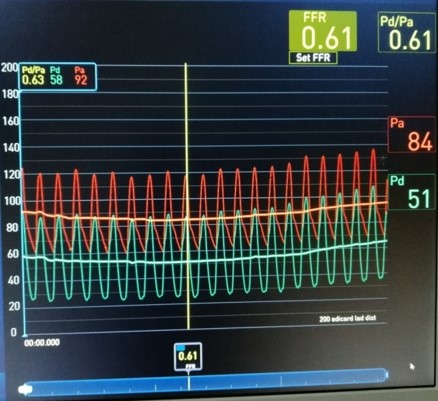Lots of interesting abstracts and cases were submitted for TCTAP & AP VALVES 2020 Virtual. Below are accepted ones after thoroughly reviewed by our official reviewers. Don¡¯t miss the opportunity to explore your knowledge and interact with authors as well as virtual participants by sharing your opinion!
* The E-Science Station is well-optimized for PC.
We highly recommend you use a desktop computer or laptop to browse E-posters.
CASE20191025_007
| CORONARY - Bifurcation/Left Main Diseases and Intervention | |
| The Story of a Sexagenarian Left Main | |
| Mesbah Islam1, Md. Shariful Islam2 | |
| Zia Hart Foundation And Reseach Institute, Bangladesh1, National Institute of Cardiovascular Diseases, Bangladesh2, | |
|
[Clinical Information]
- Patient initials or identifier number:
Mrs.X
-Relevant clinical history and physical exam:
Mrs. X, 60 years female, non-smoker, hypertensive, non diabetic, admitted to NICVD with the complaints of worsening central chest pain which correspond to CCS class-III for 4 days on the background of exertional chest pain for last 3 monthsOn examination: Pulse:76/min,regular;BP: 110/80 mmHg; Lung bases: clear
-Relevant test results prior to catheterization:
CBC, RBS, Renal Function, Serum Eletrolytes, Within Normal Limit.
ECG- Non-Specific ST-T Changes Echo- EF- 60% - Relevant catheterization findings:
LM- 99% Ostial Stenosis
LAD- Mid Segment 30-40% Stenosis Lcs-- Normal RCA_ Normal |
|
|
[Interventional Management]
- Procedural step:
Special technique for LM ostial intervention Catheter - JL 7F Catheter
Wire - All star Predilatation - 2.5 mm ¡¿ 8 mm NC quantum balloon inflated @12atm Special technique – Usually catheter engagement in crtical LM stenosis causing serious pressure drop. So special technique applied during intervene critical LM ostium. Catheter was kept unengaged. Wire & balloon were negotiated together through ostium and predilated quickly to prevent complications.Postdilatation was done by 4 ¡¿ 8 balloon for LM and 3.5mm ¡¿ 12 mm for LAD Lesion. IVUS FFR was done before stenting and after stenting.   - Case Summary:
•Left main stenosis is a dangerous coronary lesion associated with high rates of adverse events if left untreated. •The angiographic anatomy of the left main lesion is a critically important factor in clinical decisions. •Remarkable advancements in stent technology, technical refinement and adjunctive drug therapy have led to progressively improved PCI outcomes for LMCA disease. •Invasive assessment of LM stenosis improves selection of PCI cases and techniques of stenting, thus better outcomes are now possible. |
|